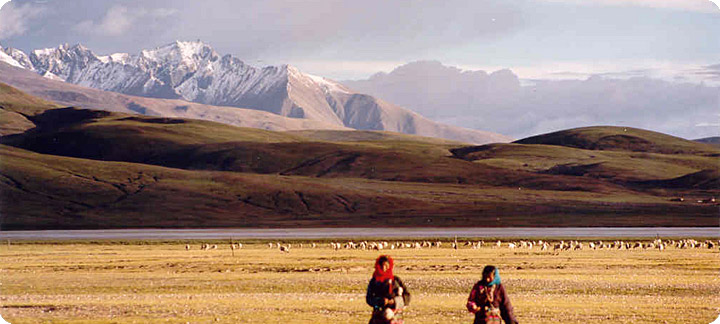
One of the most talked about and least understood is the land of Tibet. It is a plateau region in Central Asia and the indigenous home to the Tibetan people. With an average elevation of 4,900 m (16,000 ft), it is often called the "Roof of the World". Most of the Himalayan mountain range lies within Tibet. In general, the history of Tibet begins with King Srong-tsan-gam-po Songtsen Gampo (604-650 CE), although there were 27 kings before him. King Songtsen Gampo is generally considered to have introduced Buddhism to Tibet at this time. Christianity is known to have been present in Tibetan regions prior to 782. King Songtsen Gampo sought to marry Princess Wen-Cheng, a member of the extended royal family of the Chinese Tang Dynasty. He was also married to Princess Brikhuti, a Nepalese (newari) princess. Conflict between Tibet and the Tang began as Tu Yu Hun was against the marriage. Tibet sent an army to drive it from the valleys around the source of Huang He (Yellow River). After the Tang general Hou Jun Ji drove the Tibetans out of Songzhou, the Tang government became receptive and marriage took place in 641. In spite of high altitude and extreme weather conditions, the region has seen its own share of political upheaval mainly (for its silk route trade) from Tang dynasty, Mongols in early days and Chinese in general in recent times and in lesser ways by the British and Nepalese. During the suppression of pro-independence forces in the 1950s, and during the Cultural Revolution in the 1960s, most historically significant sites in Tibet were vandalized or totally destroyed.
Tibet is the traditional center of Tibetan Buddhism, a distinctive form of Vajrayana, which is also related to the Shingon Buddhist tradition in Japan. Tibetan Buddhism is practiced not only in Tibet but also in Mongolia, the Buryat Republic, the Tuva Republic, and in the Republic of Kalmykia. Tibet is also home to the original spiritual tradition called Bön (also spelled Bon). Various dialects of the Tibetan language are spoken across the country. Tibetan is written in Tibetan script. In Tibetan cities, there are also small communities of Muslims, known as Kachee (Kache), who trace their origin to immigrants from three main regions: Kashmir (Kachee Yul in ancient Tibetan), Ladakh and the Central Asian Turkic countries. Islamic influence in Tibet also came from Persia.
Having said that, the land is sparsely populated and absolutely fantastic. The atmosphere is severely dry nine months of the year, and average snowfall is only 18 inches, due to the rain shadow effect whereby mountain ranges prevent moisture from the ocean from reaching the plateaus. Western passes receive small amounts of snow but remain traversable all year round. Low temperatures are prevalent throughout these western regions, where bleak desolation is unrelieved by any vegetation beyond the size of low bushes, and where wind sweeps unchecked across vast expanses of arid plain. Northern Tibet is subject to high temperatures in the summer and intense cold in the winter. Several major rivers have their source in the Tibetan Plateau (mostly in present-day Qinghai Province), including Yangtze, Yellow River, Indus River, Mekong, Brahmaputra River - the main river that flows through Tibet. It is also home to some of the most fantastic lakes like Manasarover and Nam Tso.